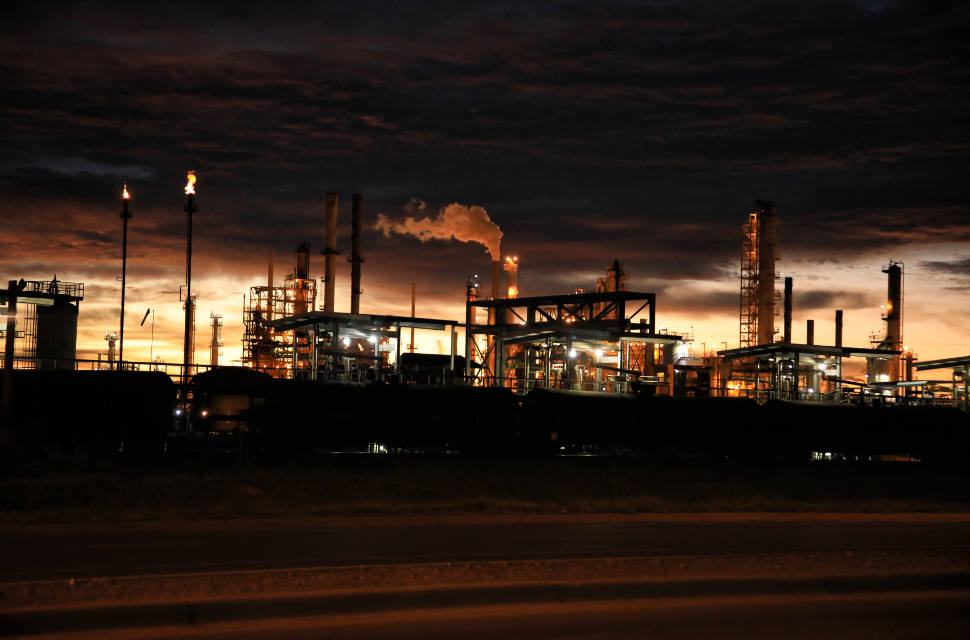Manufacturing Employment Increased Under Trump but Lags Prerecession Levels
Employment in construction, manufacturing and mining and logging increased by 0.4 percent or 74,000 in December of 2018. Forty-one states and the District of Columbia gained jobs in these “blue collar sectors.” Texas saw the largest gains for the month, adding 10,900 jobs, an increase of 0.6 percent. Next was Florida at +7,600 jobs (+0.8 percent), Ohio at +5000 jobs (+0.5 percent) and Georgia at +4,700 jobs (0.8 percent). Massachusetts lost 900 blue collar jobs (-0.2 percent) and Idaho, Illinois and Tennessee all lost 700 jobs (-0.6, -0.1 and -0.1 respectively). Louisiana saw its first increase in blue collar jobs since August, adding 900 jobs for an increase of 0.3 percent. Over the course of the year, the only states to lose blue collar jobs were Hawaii (-1,900 jobs, -3.7 percent) and South Carolina (-900 jobs, -0.3 percent). Regionally, the South added 41,700 jobs, an increase of 0.5 percent for the month of December. The South Atlantic Census Division added 20,600 jobs (+0.6 percent) followed by the West S. Central Division (+14,700 or +0.5 percent) and the East S. Central Division (+6,400 or +0.5 percent).
Construction jobs increased by 38,000 for the month — the largest increase among the blue collar job categories — due in part to relatively good weather in December. South Dakota (4.9 percent, +1,200 jobs) and Rhode Island (4.3 percent, +800 jobs) saw the most growth in construction jobs. This was followed by Indiana at 2.6 percent (+3,900), Nevada at 2.4 percent (+2,300), and Nebraska and Kentucky at 2.1 percent (+1,100 and +1,600 jobs respectively). Of the 11 states that saw a decline in construction jobs, the largest falloff was in Iowa at -2.4 percent (-1,900 jobs), followed by Maine (-2.1 percent or -600 jobs), and North Dakota (-1.1 percent or -300 jobs). Nationwide, construction employment is up 4 percent compared with December of 2017, an increase of 280,000 jobs. The largest gains were seen in Texas (+46,800 jobs, +6.4 percent), Florida (+34,900 jobs, +6.7 percent), and California (+21,700 jobs, 2.6 percent). Of the six states that lost construction jobs over the year, South Carolina fared worst with a loss of 5,100 jobs (-5.0 percent).
The manufacturing industry also experienced decent job gains, adding 32,000 jobs — an increase of 0.2 percent — despite continued growth in the trade deficit. Texas added 3,100 jobs (+0.3 percent) followed by Virginia at 2,600 jobs (+1.1 percent), and Alabama and Ohio at 2,300 jobs (+0.8 percent and +0.3 percent respectively). Tennessee saw manufacturing employment fall by 800 jobs (-0.2 percent) and Idaho by 700 jobs (-1.0 percent). Over the course of the year, manufacturing has added 284,000 jobs (+2.3 percent). The states with the largest gains for the year were Texas (+38,600, +4.5 percent), Wisconsin (+17,800 jobs or +3.8 percent) and Florida (+12,700 jobs, +3.5 percent).
Manufacturing employment under the Trump administration has risen by 473,000 or 3.8 percent and is now 8.5 percent of total nonfarm employment. This compares with 10.1 percent for the year preceding the Great Recession and 13.1 percent of total nonfarm employment in 2000. The total number of jobs in December 2018 is 1,191,400,000 (-8.6 percent) below the average for the year preceding the recession.
By region, the South Census Region added 17,000 jobs, an increase of 0.4 percent accounting for 7.8 percent of total nonfarm employment on the month. In November of 2007, total manufacturing employment was higher by 296,700 jobs and accounted for 9.3 percent of nonfarm employment in the region (12.7 percent in 2000). This outpaced all other regions. The Midwest added 6,300 jobs (+0.2 percent). At 4,118,800 in December of 2018, total manufacturing employment was still 176,600 jobs (or -4.1 percent) lower than prerecession levels. The West Region added 5,100 jobs (+0.2 percent) for a total of 2,487,600 jobs, 134,600 (-5.1 percent) jobs less than November 2007. Manufacturing employment in the Northeast grew by 4,300 jobs or +0.2 percent. Employment is still 325,700 jobs (-14.8 percent) lower than prerecession levels. During the same period, manufacturing employment fell from 11.5 percent of total nonfarm employment prerecession to 9.6 percent.
Employment in mining and logging grew by 4,000 jobs in December, an increase of 0.5 percent. Texas, again gained the most jobs, 3,300, an increase of 1.2 percent. This was followed by Oklahoma (+1,500 jobs, 2.7 percent) and North Dakota (900 jobs, 4.3 percent). While there was no change in coal mining jobs in Kentucky and Wyoming, Pennsylvania added 100 jobs, an increase of 1.9 percent. Over the year, coal mining gained 2,100 jobs, an increase of 4.1 percent. However, coal mining jobs are down 19,800 or -26.9 percent since prerecession levels. At the state level, Kentucky and Pennsylvania lost 9,000 (-60.4 percent) and 3,500 (-39.3 percent) jobs over the same period. Wyoming actually gained a total of 1,300 jobs (+31.0 percent) likely due to the fact that coal in both states “has a much higher sulfur dioxide content, which is costly to remove.”
Alabama Alaska Arizona Arkansas Blue collar worker California Coal Coal mining Colorado Construction D.C. Deregulation Economic growth Energy Florida Hawaii Idaho Illinois Indiana Industrial Belt Iowa Kansas Kentucky Louisiana Maine Manufacturing Massachusetts Michigan Midwest Mining Minnesota Mississippi Missouri Montana Nevada New Jersey New Mexico New York North Carolina North Dakota Ohio Oklahoma Oregon Pennsylvania Rhode Island South Carolina Tennessee Texas Vermont Virginia Washington West Virginia Wisconsin Wyoming

